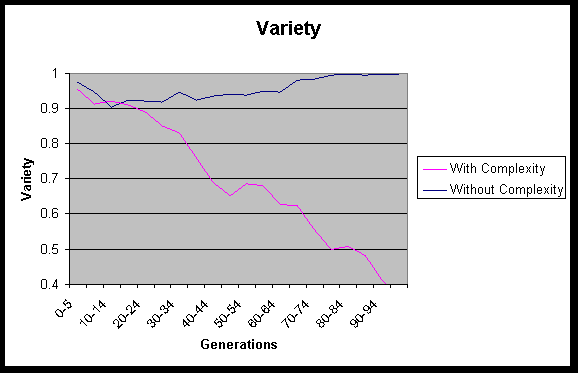
Population Variety (with complexity vs. without complexity)
This graph is one of the most intriguing of all of the results,
demonstrating the dramatic effect of introducing complexity as a factor
in fitness. In the test that used complexity as part of fitness,
the relative penalty gained by a complex individual was very small.
(The final formula was to add complexity/50 to the fitness measure.
The fitness measures varied between 70 and 200, while complexity ran
from 1 to 100--I would guess that most individuals saw a roughly 1%
increase in their fitness measures due to complexity). However, the
average fitness and the
average complexity graphs
demonstrate the dramatic effect that this had on the complexity and
fitness of the population over time. Further, as this graph demonstrates,
it effectively limited the population of the test using complexity to
numerous occurances of a small number of individuals, while the test that
did not use complexity was composed of almost entirely unique individuals,
allowing the search space to continue to expand.
William Bauder
wjb14@columbia.edu